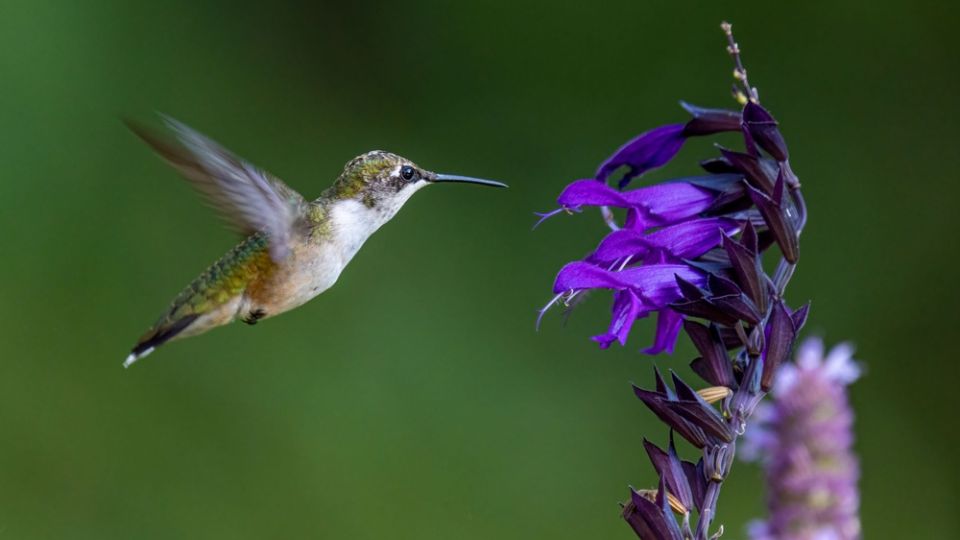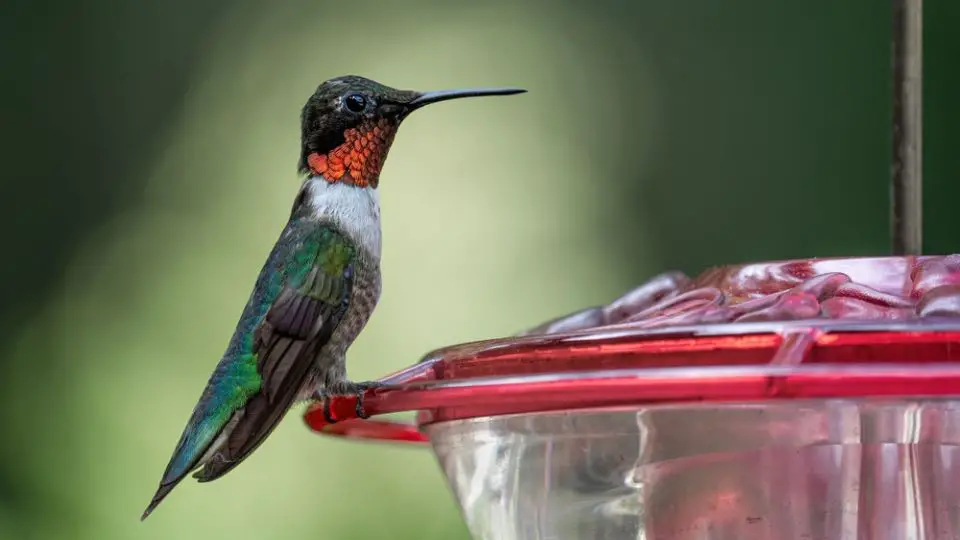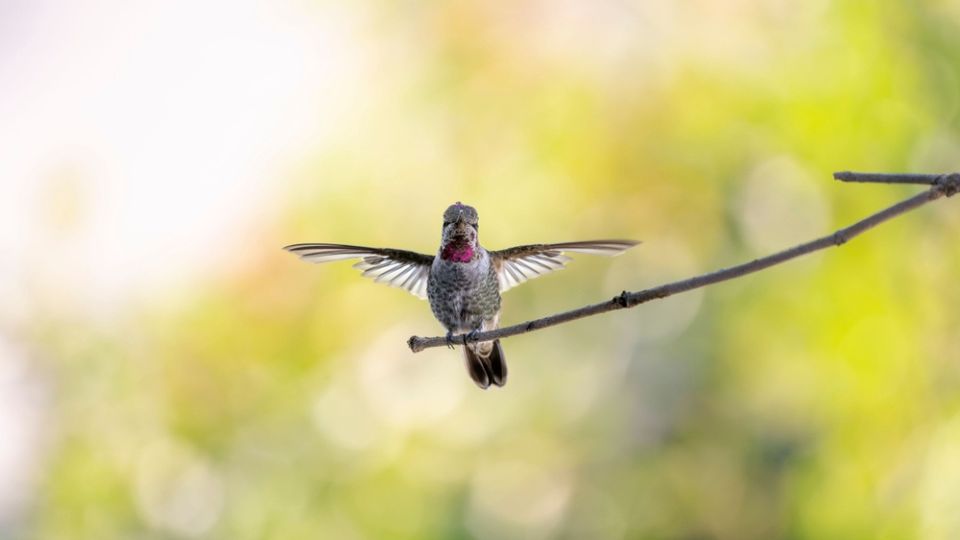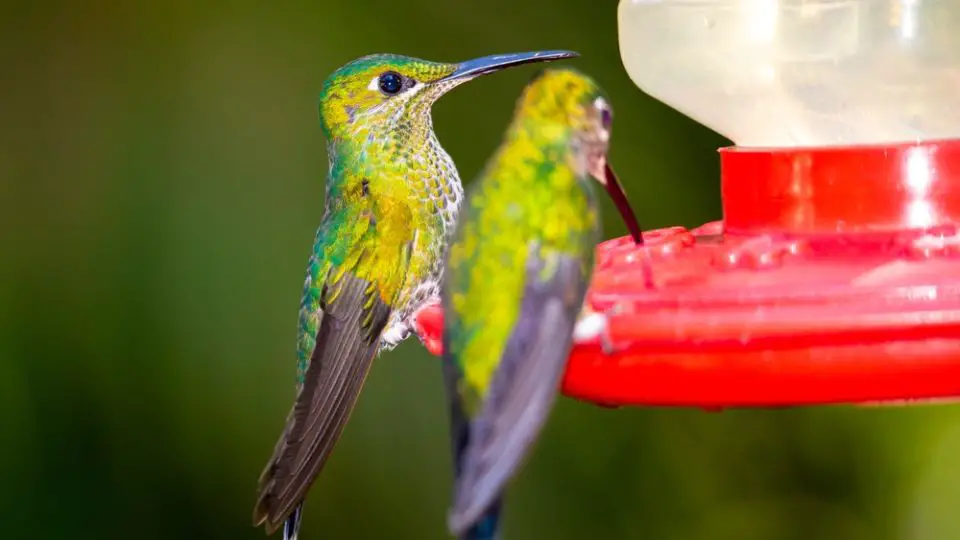Hummingbirds leave Kansas in late fall, with most hummingbirds migrating south by mid-October. They stay through the summer and early fall and leave Kansas by mid-October. Hummingbirds arrive back in Kansas by mid-April the following year.
Spring and fall are busy times for hummingbirds in Kansas. Hummingbirds arrive by mid-April in the spring for breeding grounds. Eight species of hummingbirds have been reported in Kansas, with the Ruby-throated Hummingbird living in Kansas year-round.
Below we explore hummingbird migration in Kansas. Find out what to feed hummingbirds and how to easily create a space for these creatures in your yard or patio.
Table of Contents
When Do Hummingbirds Arrive In Kansas?
Hummingbirds arrive in Kansas by mid-April. The Ruby-throated Hummingbird is the only true hummingbird commonly found in Kansas. Ruby-throated breed in Kansas during the spring and summer months.
Male hummingbirds arrive first during spring migration. They locate food sources and prepare for the arrival of the females. Females arrive for the breeding season a week or two after males.

When Should I Put My Hummingbird Feeders Out?
Put out hummingbird feeders by early April. The most common hummingbird in Kansas, the Ruby-throated, migrates over 3,000 miles between Panama and Kansas. Keep hummingbird feeders away from other wild bird feeders.
Migrating hummingbirds need food constantly to survive. They remember where food sources are year-to-year and will return to where they fed the previous year. Be ready for these migrants with homemade hummingbird nectar.
How Do Hummingbirds Know When To Return To Kansas?
Hummingbirds are driven by their circadian rhythms. Subtle environmental changes tell them it’s time to migrate north or south, depending on the season. Hummingbirds are Neotropical migrants—they breed in temperate climates but migrate south for the winter. Blooming flowers, day and nighttime temperatures, and the behavior of predators all tell hummingbirds to begin their migration.
When Do Hummingbirds Leave Kansas?
Hummingbirds start to leave Kansas by mid-September. Some male hummingbirds start fall migration mid-July, while others stay until the fall. Males migrate south first, followed by females and juveniles. Hummingbirds must be gone before the first frost around mid-October since their bodies can’t tolerate cold temperatures for long.
When Should I Take Down My Hummingbird Feeder ?
Take hummingbird feeders down at the beginning of November. Wait until a week or two after seeing the last hummingbird in your area to ensure all stragglers have food sources.
Keep hummingbird feeders full, especially in late summer. Females are still raising young, and migrants are passing through, making late summer a busy time at hummingbird feeders.
What Do Hummingbirds Eat?
Hummingbirds eat sugar water, small insects, and flower nectar. They can eat 3 times their body weight in one day. They feed even more frequently before migration, ensuring they have the stamina to fly thousands of miles. Between backyard feeders and native plants, feeding hummingbirds is easy.

Kansas Hummingbirds
Birdwatchers in Kansas report one year-round resident hummingbird, the Ruby-throated Hummingbird. Eight other species have also been reported. Some are rare or accidental species, while others migrate through Kansas in the spring and fall, with most hummingbirds gone from the state by the end of October.
Allen’s Hummingbird
This species of hummingbird is rare in Kansas. Sporting an orange-colored throat and a green and gray body, this hummingbird usually stays on the west coast in California and Oregon. Allen’s Hummingbirds are frequently found in the western US during migration season.
Anna’s Hummingbird
Spotted during warm months, the male of this species boasts a rosy-red throat. Anna’s Hummingbirds are specifically the only hummingbird species that don’t migrate. These birds stay on the Pacific Coast all year, ranging as far north as Alaska. Some expand their spring and summer ranges as flowers bloom in the Rocky Mountains and the western US. Male Anna’s vocalize a mating song during their mating ritual.
Black-chinned Hummingbird
The Black-chinned Hummingbird is another hummingbird found commonly in the western United States. Males have a black throat with a purple patch underneath, thus giving them their name. Females are browner in color and have white tips on their tails. Black-chinned normally winter along the Gulf Coast.
Broad-tailed Hummingbird
This species of hummingbird frequents the western US. From the Rocky Mountains to Texas, through Arizona, and up to Wyoming. During the winter they migrate to Mexico. These hummingbirds prefer higher mountain elevations.
Calliope Hummingbird
Calliope Hummingbirds are the smallest breeding birds in the United States. Males have a magenta throat and weigh less than a penny. Calliope hummingbirds migrate from Mexico to Canada and are found in the Rocky Mountains and near the Gulf of Mexico.
Costa’s Hummingbird
Male Costa’s have a purple crown and throat. They prefer the deserts of the southwest, but urbanization has forced them out of their natural breeding grounds. Costa’s are common in Arizona and California during the breeding season, and have only rarely been spotted as far east as Kansas.
Ruby-throated Hummingbirds
Ruby-throated are common, especially in eastern Kansas, and are the only year-round resident. They breed in most of the US, ranging from wintering grounds in Central America to summers in Canada. Ruby-throated Hummingbirds are common in all the eastern states, including Ohio, Missouri, Tennessee, Indiana, and Pennsylvania. Males are known for their bright red throats.
Rufous Hummingbird
The Rufous Hummingbird’s breeding grounds are farther north than any other hummingbird. Commonly found in Alaska during breeding season, males are known for their rich orange feathers. Rufous are found in most US states, including Kansas, and have been known to overwinter in Florida, Louisiana, Alabama, and Mexico.

Attracting Hummingbirds in Kansas
Hummingbirds are drawn to native plants with flowers that are tube-shaped. They are especially attracted to red color, so choosing red or pink flowers will attract hummingbirds. Even just a few hanging baskets will help hummingbird food since hummingbirds can hover in front of the flowers while feeding.
Consider planting zinnias, phlox, trumpet vine, or bearded tongues in Kansas. Make sure to include a bush or shrub so the hummingbirds have shade to sit in on hot days. Devoting even a small area to a hummingbird garden helps provide these tiny birds with food.
Hummingbirds also need fresh water, so provide a shallow bird bath if you have the space. Placing a stone in the middle of the bird bath ensures the hummingbirds don’t drown since most species are under 4 inches long. Fresh water helps attract a variety of pollinators.
Kansas Hummingbirds Migration
Fall migration is a busy time in Kansas, with a variety of hummingbirds flying south for the winter. Attracting the smallest birds in North America requires only homemade nectar and flowering plants. During both spring and fall migration, hummingbirds will find your food sources and remember them for years to come.

